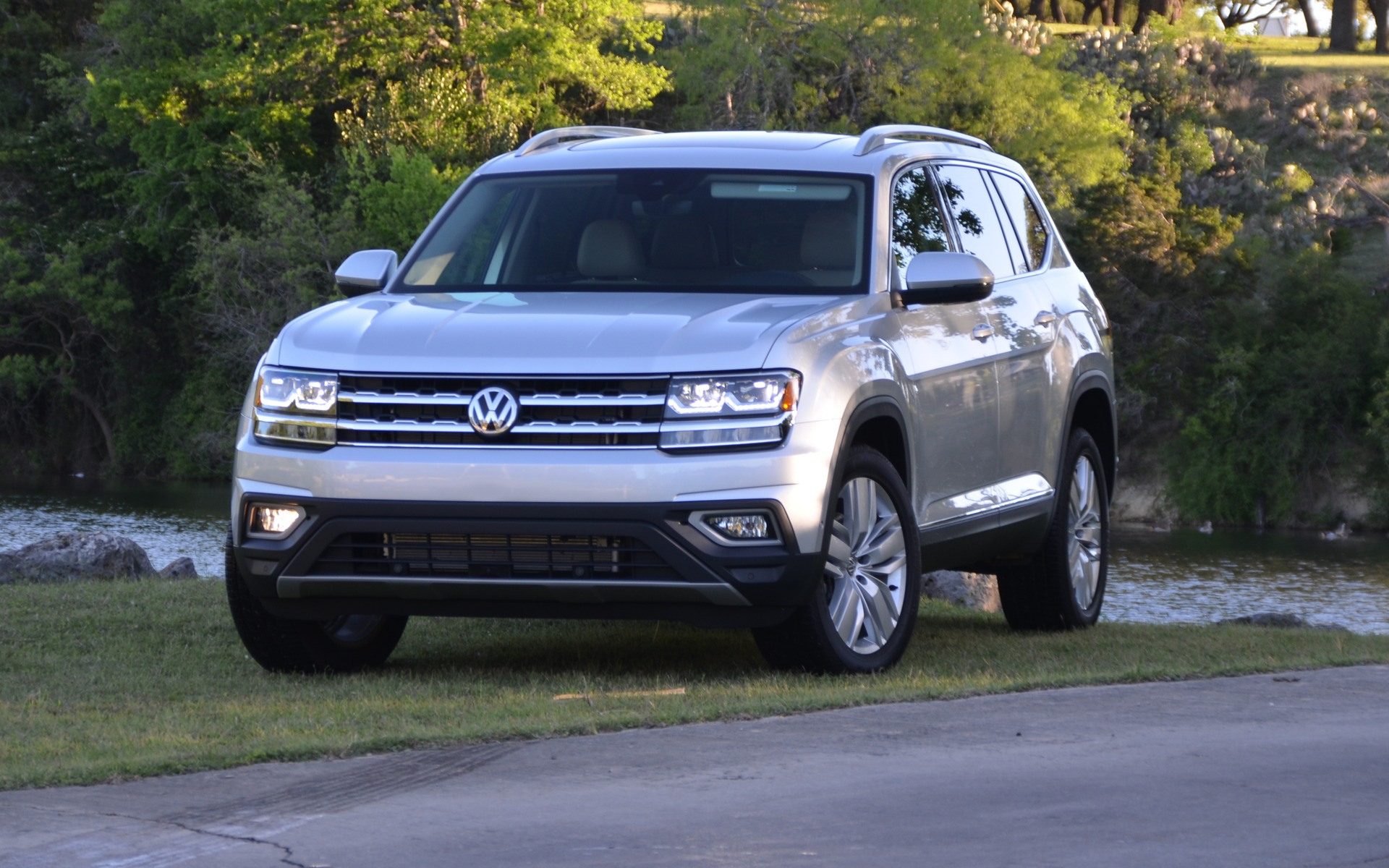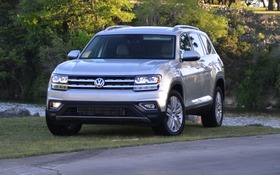2018 Volkswagen Atlas: Like an Open Book on America

| Strong points |
|
|---|---|
| Weak points |
|
Just a few days ago, Volkswagen summoned a group of journalists to try the new Atlas seven-seat SUV. However, a handful of us had the chance to test drive it in Sacacomie, Quebec last March, when the conditions were still wintery. That time, the goal was to showcase the fifth-generation 4MOTION system. This time around, we tested the Atlas on smooth Texan roads, where it was hard to fully appreciate the effectiveness of the AWD system.
Let’s start by saying that we expect the Atlas to eventually replace the Touareg, whose next generation will be presented at the upcoming Frankfurt Motor Show. Meanwhile, the new Tiguan is getting longer and will offer an optional third bench. In fact, Canadians will only have access to the stretched version. With both the Atlas and the Tiguan in their line-up, Volkswagen will have plenty to offer SUV drivers, making it hard to justify the Touareg. Nothing has been confirmed yet, and we’ll have to wait another few months for more information.

Now that’s versatile!
The Atlas is built on the versatile MBQ platform, which also acts as the base for the seventh-generation Golf, the upcoming stretched Tiguan and even the wee Polo (which isn’t available in Canada). The Atlas may not seem that big, but it is. It even beats the Chevrolet Tahoe for wheelbase length and cargo capacity! However, its closest competitors are actually the Mazda CX-9, Honda Pilot, Hyundai Santa Fe and Ford Explorer.
When it comes to style, you won’t find anyone saying that the Atlas lacks personality. While looks are a matter of personal preference, I started to fall for this vehicle’s charms after spending a day with it. The interior features the same themes previously seen in other Volkswagen vehicles, so what it lacks in originality, it makes up for in conformity. I found some of the plastics a little low-end and the woodgrain paneling wasn’t very convincing. That said, the main centre screen is nicely integrated and offers clear image displays. Onboard technology includes App-Connect with Apple CarPlay, Android Auto and MirrorLink (which displays your phone interface on the screen).
Six seats or seven
As usual with Volkswagen, the front seats are just firm enough and prove comfortable even after several hours. The second-row seats are decent too, and the third row can accommodate adults in relative comfort. To access the third row, simply slide the second-row seats out of the way (you can even do this with a child car seat installed). The high-end Highline and Execline versions can be equipped with the Captain’s Package, which includes two captain’s seats for the second row instead of a bench. This option would make your Atlas a six-seater. Meanwhile, the Trendline and Comfortline come with the bench only, for a total of seven seats.

A popular engine and a less-popular one
When the Atlas hits the market in June 2017, there will just be one engine available: a 3.6L VR6 serving up 276 horsepower at 6200 rpm and 266 lb.-ft. of torque at 2750 rpm. An eight-speed automatic transmission will transmit power to the acclaimed 4MOTION drive system. American drivers will also be able to buy a front-wheel drive version, but I doubt that many Canadians will complain about not being afforded this “opportunity.”
During our test drive, we recorded an average fuel consumption of 12.7 L/100 km, which is about average for a vehicle of this size. Unfortunately, the 3.6L mill started gasping for breath at low revs, which makes us think that a 3.0L V6 TDI might have been a better choice for the Atlas. However, the TDI has given Volkswagen quite a few headaches, so it’s not considered an option at this point.
By fall, there will be another engine on offer: a 2.0L turbocharged inline-four with 235 horsepower between 4500 and 6200 rpm, and 258 lb.-ft. of torque between 1600 and 4400 rpm. Power will only be transmitted to the front wheels by way of the same eight-speed automatic. Even though its power and torque levels aren’t much lower than the VR6’s, we don’t expect this engine to be very popular.
With the VR6, an impromptu 0-100 km/h acceleration took 9.3 seconds. This isn’t bad, but it’s certainly nothing to write home about. We expect the same exercise to take an additional 1 or 2 seconds with the four-cylinder engine. Now, imagine what it will be like towing 2000 lbs. (907 kg)! The VR6 is capable of towing up to 5000 lbs. (2268 kg).
Donald’s pride
On the road, the Atlas simply doesn’t offer the same inspired ride as the Mazda CX-9. The steering is precise but comes up short on feedback. The body rolls a little on corners, but less than a Hyundai Santa Fe or Ford Explorer. Rear visibility isn’t as bad you’d expect, but the massive sideview mirrors—however much they may help with checking your blind spot—block street corner views.
It’s hard to see how the Atlas will thrive in Canada. But since hefty SUVs are still big in the U.S., there’s a good chance that Volkswagen will claw away at their competitor’s sales south of the border. Plus, the Donald is sure to like the fact that the Atlas is being built in America (Chattanooga, Tennessee to be exact).
How much $$$
- Atlas Trendline 2.0L, $35,690
- Atlas Trendline 3.6L, $39,790
- Atlas Comfortline 2.0L, $39,690
- Atlas Comfortline 3.6L, $43,790
- Atlas Highline 3.6L, $48,990
- Atlas Execline 3.6L, $52,540











